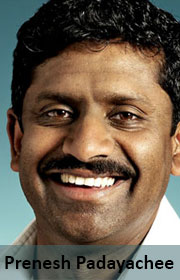 For network operators in Africa, the diversity of legal and regulatory systems poses a challenge. As countries’ technology and telecommunications environments mature at different rates, what is legal, acceptable or available in one country may not be so in another.
For network operators in Africa, the diversity of legal and regulatory systems poses a challenge. As countries’ technology and telecommunications environments mature at different rates, what is legal, acceptable or available in one country may not be so in another.
At the recent Capacity Africa conference held in Tanzania, pressing issues focusing on the state of African networks were raised. Among these were bandwidth availability and pricing, diversity in environments, and regulation.
Bandwidth availability and pricing vary widely, competitive environments are diverse, and the availability of technical skills and technologies, is inconsistent. Many countries still operate under telecoms monopolies. And as one regulation is applied in a country, it is often adopted by its neighbours, meaning that the environment is constantly and rapidly changing, too. This makes delivering a standard service across different African countries very difficult.
Software-defined networking (SDN), which separates the decision-making systems from the network traffic systems in a network, is helping solve some of these challenges.
SDN inserts an abstraction layer between the traffic packets and the commands, which means that you no longer need to have sophisticated routers, for example, at every point in a network where decision-making needs to happen. It means you can use standardised hardware interacting via standardised software, but still localise each product to suit the market it’s in.
So a software vendor, for example, doesn’t have to have a presence in a country in order to provide support for that product — it can be done centrally by using SDN network functionality. Engineers, rather than being flown into a country to troubleshoot a problem, can troubleshoot and solve it from a centralised point.
For operators this means you can use standard, low-spec devices on a network in a country to cover the last mile, and manage all the intelligence around routing, traffic prioritisation and so on from a central point using virtual routers.
This also means that Africa can leapfrog the more developed world from a technology point of view as there is no need to worry about deployed technology and getting return on investment from legacy infrastructure, because it’s not there.
If you look at mobile networks, for example, operators entering or expanding into new markets can leapfrog 2G and 3G and go straight to LTE.

This plays into Africa’s ability to be a leader in the communications technology space. We can take a greenfield approach and learn from other countries’ lessons, and, theoretically, get much more suitable solutions for local environments.
We do need to overcome issues of pricing, regulatory maturity and monopolies, however. It’s merely a matter of time before this changes. As more and more international entities make their presence felt on the continent, the monopolies are realising businesses and consumers have a much better view of the actual cost to deploy and run services, which is making it increasingly difficult to mask the real costs. As regulation changes and demand for transparency increases, prices will come down to global norms.
Internet penetration in Africa is only 15% — about 180m users — the majority of whom use mobile devices, which is a factor of available infrastructure. Access is also predominantly in urban areas. As costs decrease for wireless, satellite and other connectivity mediums, this will spread into semi-rural and rural areas too.
The combination of technology (SDN) and market development (competition) will change the telecoms landscape in Africa in the near term, and for the better.
- Prenesh Padayachee is chief technology officer at Internet Solutions

